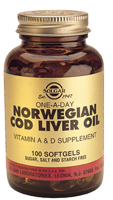Vitamin D – What’s all the fuss?
- By Rebecca Taggart
- Reading Time: 3 mins.
Vitamin D has been getting a lot of attention lately for several reasons. It appears that vitamin D deficiency may affect many more people than previously thought who reside at mid-northern latitudes, including most of the United States. This is true even at the current recommended daily intake of 400 International Units (IU). The National Institutes of Health will likely recommend an increase to 800 – 1000 IU per day in May 2010, when they release their review of the vitamin D guidelines. At the same time, a flood of new research is showing links between adequate vitamin D levels in the body and decreased rates of colon, breast, and prostate cancers; diabetes; hypertension; and a healthy immune system. Adequate vitamin D intake also improves mood and wellbeing and is effective against Seasonal Affective Disorder (SAD). Mortality rates among those 65 and above are 2.5 times lower for those with optimal blood levels of vitamin D.
 The obvious response to all this information is to increase your vitamin D intake, at least in the winter. But that isn’t quite as simple as it sounds. Our skin naturally manufactures adequate vitamin D for us, so long as the sunlight is sufficiently robust, and we bare some skin. But in winter the sun is too weak north of latitude 34 °, roughly a line between Los Angeles and South Carolina. For up to six months a year, most of us cannot manufacture our own Vitamin D because we spend most outdoor time covered up, in sunlight too weak to produce the vitamin.
The obvious response to all this information is to increase your vitamin D intake, at least in the winter. But that isn’t quite as simple as it sounds. Our skin naturally manufactures adequate vitamin D for us, so long as the sunlight is sufficiently robust, and we bare some skin. But in winter the sun is too weak north of latitude 34 °, roughly a line between Los Angeles and South Carolina. For up to six months a year, most of us cannot manufacture our own Vitamin D because we spend most outdoor time covered up, in sunlight too weak to produce the vitamin.
 Unfortunately, there are very few food sources of vitamin D, and the only good natural source is fatty fish. A serving of salmon (about 800 IU) or mackerel (about 400 IU) are good sources. Milk began to be fortified in the 1930s with vitamin D to prevent rickets. Today a glass of fortified milk (115 IU) provides about 25% of the daily recommended amount, but most other dairy products are not similarly fortified. Many kinds of cereal are, but are they fortified with the right D? The vitamin in the form D3 is three times more absorbable than D2, the common synthetic form. This is beginning to change but look on labels to be sure you’re getting the right one.
Unfortunately, there are very few food sources of vitamin D, and the only good natural source is fatty fish. A serving of salmon (about 800 IU) or mackerel (about 400 IU) are good sources. Milk began to be fortified in the 1930s with vitamin D to prevent rickets. Today a glass of fortified milk (115 IU) provides about 25% of the daily recommended amount, but most other dairy products are not similarly fortified. Many kinds of cereal are, but are they fortified with the right D? The vitamin in the form D3 is three times more absorbable than D2, the common synthetic form. This is beginning to change but look on labels to be sure you’re getting the right one.
 Cod liver oil is naturally high in vitamin D and was given to children before milk began to be fortified. Today cod liver oil comes in gel supplements or is lemon-flavored, making it much more palatable than during our grandparents’ childhoods. It is taken religiously in Norway and other Scandinavian countries in months with an “r” when sunlight is weak and days are shorter. Cod liver oil is also high in omega-3s, compounds found to have extensive health benefits. The downside is that many fish oils sold in the US have very high levels of fat-soluble vitamin A, which can be toxic in high doses, unlike vitamin A our bodies produce from vegetable-produced beta-carotene. Unpurified cod liver oil can have high levels of PCBs and heavy metals. Norwegian-produced oil generally has reduced A and is purified.
Cod liver oil is naturally high in vitamin D and was given to children before milk began to be fortified. Today cod liver oil comes in gel supplements or is lemon-flavored, making it much more palatable than during our grandparents’ childhoods. It is taken religiously in Norway and other Scandinavian countries in months with an “r” when sunlight is weak and days are shorter. Cod liver oil is also high in omega-3s, compounds found to have extensive health benefits. The downside is that many fish oils sold in the US have very high levels of fat-soluble vitamin A, which can be toxic in high doses, unlike vitamin A our bodies produce from vegetable-produced beta-carotene. Unpurified cod liver oil can have high levels of PCBs and heavy metals. Norwegian-produced oil generally has reduced A and is purified.
Get tips for your office
Be an office hero!So where does this all leave us? Most of us need more vitamin D, especially in November, December, January, and February. Getting enough Vitamin D can have a significant impact on your health, but getting it from the wrong sources can lead to problems. Natural sources are recommended over synthetic sources, so look for supplements and fortified foods containing vitamin D3. Cod liver oil can be a right choice, but make sure vitamin A levels are below the daily recommended dosage and that the oil has been purified to remove toxins.
The FruitGuys recommends you discuss vitamin D supplementation with your doctor.
– Rebecca Taggart


